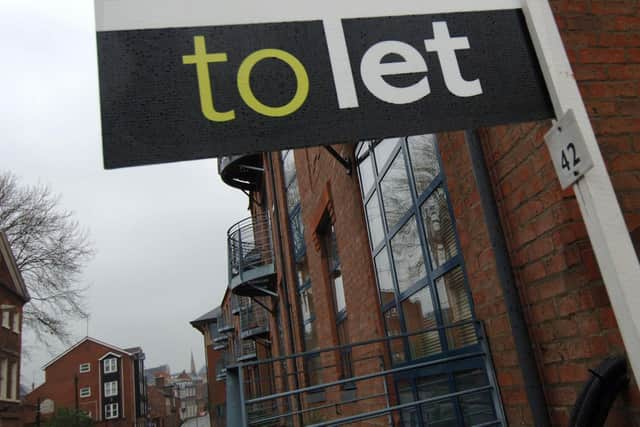New social housing lettings in Portsmouth, Fareham and Gosport have dropped significantly in past 10 years
and live on Freeview channel 276
In Fareham and Gosport the numbers plunged by about half, while in Portsmouth the numbers fell by more than 10 per cent. However, Havant bucked the trend as lettings rose by more than a third
Across England, access to affordable rental properties has steadily declined, with the number of households provided with new social lettings each year falling from 396,000 in 2011-12 to 267,000 last year.
Advertisement
Hide AdAdvertisement
Hide AdHousing charity Shelter said the only way to solve the housing crisis is to ‘invest in a new generation of good quality and sustainable social homes’.


The latest Department for Levelling Up, Housing and Communities figures show there were 772 new social housing lettings offered to tenants in Portsmouth in 2021-22 – up from 646 the year before. Despite the recent increase in new lets, 884 new lets were offered in 2011-12.
In Gosport, the figures show there were 301 new social housing lettings offered to tenants in 2021-22 – up from 296 the year before. 570 new lets were offered in 2011-12. In Fareham 170 new social housing lettings offered to tenants in 2021-22 – down from 172 the year before. In 2011-12, 386 new lets were offered.
Meanwhile, in Havant 499 new social housing lettings offered to tenants in 2021-22 – up from 298 the year before. In 2011-12, 350 new lets were offered.
Advertisement
Hide AdAdvertisement
Hide AdThis covers all social housing, which is split into affordable or intermediate rent, and social rent. The former means a tenant pays 80 per cent of market value, while the latter is set by the government, is paid to registered providers and local authorities, and is significantly lower than the private market.
The figures also show 1.2m households were on local authority waiting lists at the end of March 2022.
Polly Neate, chief executive of Shelter, said: ‘Every day our frontline services deal with the consequences of not having enough social housing, from families stuck in unsuitable and often poor-quality temporary accommodation to people being pushed into homelessness because they can no longer keep up with soaring private rents. There is only one lasting solution to the housing emergency, and that is to invest in a new generation of good quality and sustainable social homes.’
Nationally, the number of new properties let as solely social rents – the more affordable social housing category, and roughly equal to 50 per cent of market value – has declined significantly over the last decade. There were just 225,000 in 2021-22, down from 391,000 in 2011-12.
Advertisement
Hide AdAdvertisement
Hide AdLuke Murphy, associate director at think tank the Institute for Public Policy Research said: ‘The long-term decline in the share of new lettings in council homes also reflects the ongoing shrinkage of the number of local authority-owned social homes. All of this points to the failure to build sufficient homes to meet demand, including genuinely affordable homes. The government must rapidly address this by increasing investment in affordable housing and reforming the land market and planning to increase the overall supply.’
The DLUHC said it is investing £11.5bn into building more social homes to deliver tens of thousands of homes available for rent and sale through its Affordable Homes Programme.